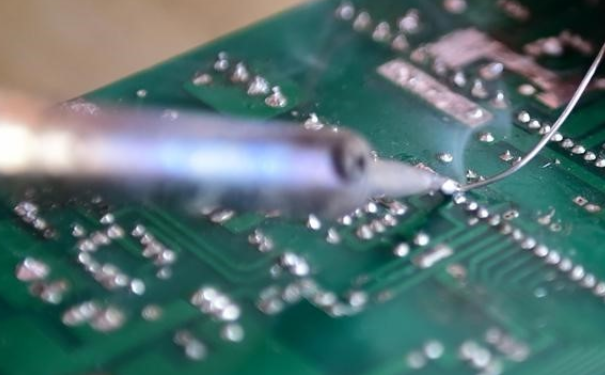What are the reliability test methods of lead-free solder joints?
Date:2022-05-09 16:05:28 Views:2363
Nowadays, in electronic assembly technology, people's awareness of environmental protection is becoming stronger and stronger. From the aspects of environmental protection, legislation, market competition and product reliability, lead-free is imperative. Lead free solder joints are polycrystalline eutectic. According to the principle of light diffusion, lead-free solder joints will not reflect light and show an "orange peel shape". In addition, the solidification of solder is accompanied by volume shrinkage, which is about 4%. Most of the volume shrinkage occurs at the last solidification of solder.
The reliability test of lead-free solder joint is mainly the heat load test (temperature shock or temperature cycle test) for electronic assembly products; Carry out mechanical stress test on the junction of electronic devices according to the fatigue life test conditions; Use the model for life assessment. At present, the well-known model is the coffin Manson model of low cycle fatigue. Generally, the modified coffin Manson model is used when considering the influence of average temperature and frequency, while the coffin Manson model is used when considering the temperature characteristics and creep relationship of materials.

The reliability test methods of lead-free solder joints mainly include appearance inspection, X-ray inspection, metallographic slice analysis, strength (tensile and shear), fatigue life, high temperature and high humidity, drop test, random vibration, reliability test methods, etc.
Appearance inspection: the solder joints of lead-free and lead-free welding are different from each other in appearance and affect the correctness of AOI system. The fringes of lead-free solder joints are more obvious and coarser than the corresponding lead solder joints, which is caused by the phase transition from liquid to solid. Therefore, this kind of solder joint looks more rough and uneven. In addition, due to the high surface tension of lead-free solder, it is not as easy to flow as lead solder, and the fillet shape is also different.
Therefore, the testing instrument must make some parameter or program adjustments. The manufacturer of automatic optical detector (AOI) has launched corresponding solutions, including Omron using three-color light source and different irradiation angles to represent the three-dimensional shape of the solder joint with two-dimensional images.
X-ray inspection: there is an increase of false soldering in the spherical solder joint of lead-free welding. The welding density of lead-free welding is high, which can detect the cracks and false welding in welding. Copper, tin and silver should be "high-density" materials. In order to characterize the characteristics of excellent welding, monitor the assembly process and analyze the structural integrity of the most important solder joints, it is necessary to recalibrate the X-ray system and have high requirements for testing equipment.
Quasi automatic solder joint reliability detection technology is an advanced technology that uses photothermal method to detect the solder joint quality of circuit board point by point. It has the characteristics of high detection accuracy, good reliability and no need to contact or damage the tested solder joint. During the detection, the determined laser energy is injected into the solder joint of the printed circuit board point by point, and the thermal radiation generated by the solder joint after being irradiated by the laser is monitored by the infrared detector. Since the thermal radiation characteristics are related to the quality of the solder joint, the quality of the solder joint can be determined accordingly. The alignment and injection of laser and solder joint and the difference of solder joint quality are completed by computer and corresponding software.
The test device consists of yjlg laser system, infrared detection system, X-Y scanning working platform, computer-controlled driving system, closed-circuit television monitoring system and interpretation software. The detection rate of heavy defects in solder joints is 100%, and the detection rate of other defects is much higher than that of manual detection. The detection speed meets the needs of small batch production, and is especially suitable for the detection of products with high reliability and small batch.
In the reliability test of lead-free solder joints, the more important is the temperature related fatigue test for the different thermal expansion coefficients of solder joints and connecting components, including isothermal mechanical fatigue test, thermal fatigue test and corrosion resistance test. According to the test results, it can be confirmed that different lead-free materials have different mechanical stress resistance at the same temperature. At the same time, some studies show that different lead-free materials show different failure mechanisms and failure modes.
For manufacturers, reliability is a high-level consideration, but excellent manufacturing technology is the most important. Without advanced manufacturing technology, there is no high reliability. Therefore, improving the material and process is the key to solve the reliability and failure defects of lead-free welding.
Solder joints play an important role in microelectronic packaging industry, and relevant design and technology should be paid full attention to. Actively optimizing the welding process, finding out the failure mode, analyzing the failure mechanism and improving the product quality and reliability level are of great significance to the electronic packaging industry. Due to the difference of solder and the adjustment of welding process parameters, lead-free solder joints will inevitably bring new problems to the reliability of solder joints. We analyze the factors affecting the reliability of lead-free solder joints from the perspective of design, material and process, such as the increase of intermetallic compound thickness, thermal matching of materials, cavity problem, change of reliability test parameters and so on.
The lead-free technology has become more and more mature, but there are still some outstanding problems in the lead-free process, such as shear fatigue, creep, false soldering, the main deformation mechanism of thermal fatigue, the influence and action mechanism of microstructure on the fatigue behavior of solder joints, which need to be further studied.




 Weixin Service
Weixin Service

 DouYin
DouYin
 KuaiShou
KuaiShou





















